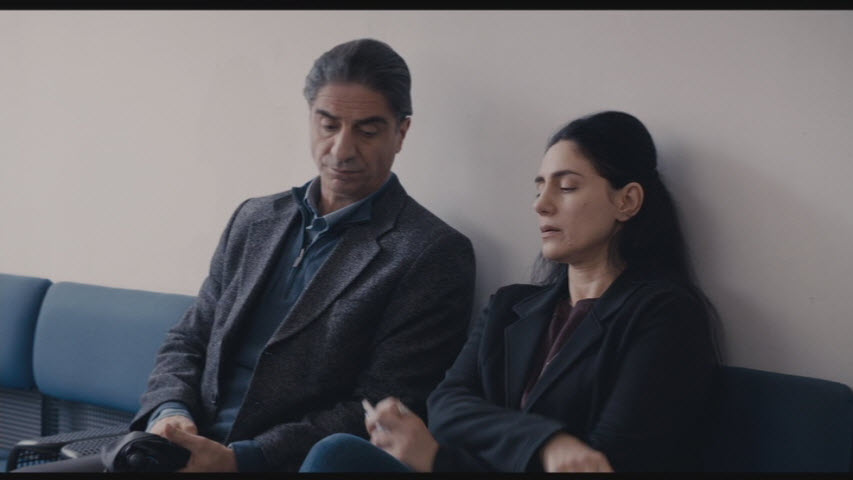
The Israeli film Gett: The Trial of Viviane Amsalem is the rare work of craft that takes a single location conceit and morphs it from filmed theater to something purely cinematic. Director-writer siblings Ronit and Shlomi Elkabetz are sure-handed in how they tell the story of Viviane’s trial. Viviane’s story is one often heard but rarely witnessed: Because her husband is the party with sole power to grant a divorce (a “gett”), Viviane is trapped in a dead marriage. It’s one story representing many.
The Elkabetz’s are impassioned in their wielding of the camera, an instrument that, in reality, never sees the inside of one of these proceedings. They know that sight is power, a notion clearly spelled out by the images they use to tell this story. It’s a trial by glances, stares, and postures all embedded with deep emotion. Ronit Elkabetz delivers a powerhouse performance as Viviane, pleading to the court and her husband for freedom. The men of this court may not see her, but the audience certainly does; the camera empathizes with and adores her. Her face is well of emotion and history.
We are given no explicit reasons for the divorce other than that Viviane and Elijah are incompatible; a relationship of twenty-plus years—five of which are spent in this courtroom—is near combustion. The single courtroom location is staunch, drab, and unadorned, never changing once during the years of this story. It serves as a legal and religious prison.
Gett is a startling work of activism, a plea for freedom, for justice, and ultimately, for shalom to be found once again at the heart of faith—a plea we could all do better to pursue with more vigor. — Colin Stacy (2015)
Arts & Faith Lists:
2015 Arts & Faith Ecumenical Jury — #7